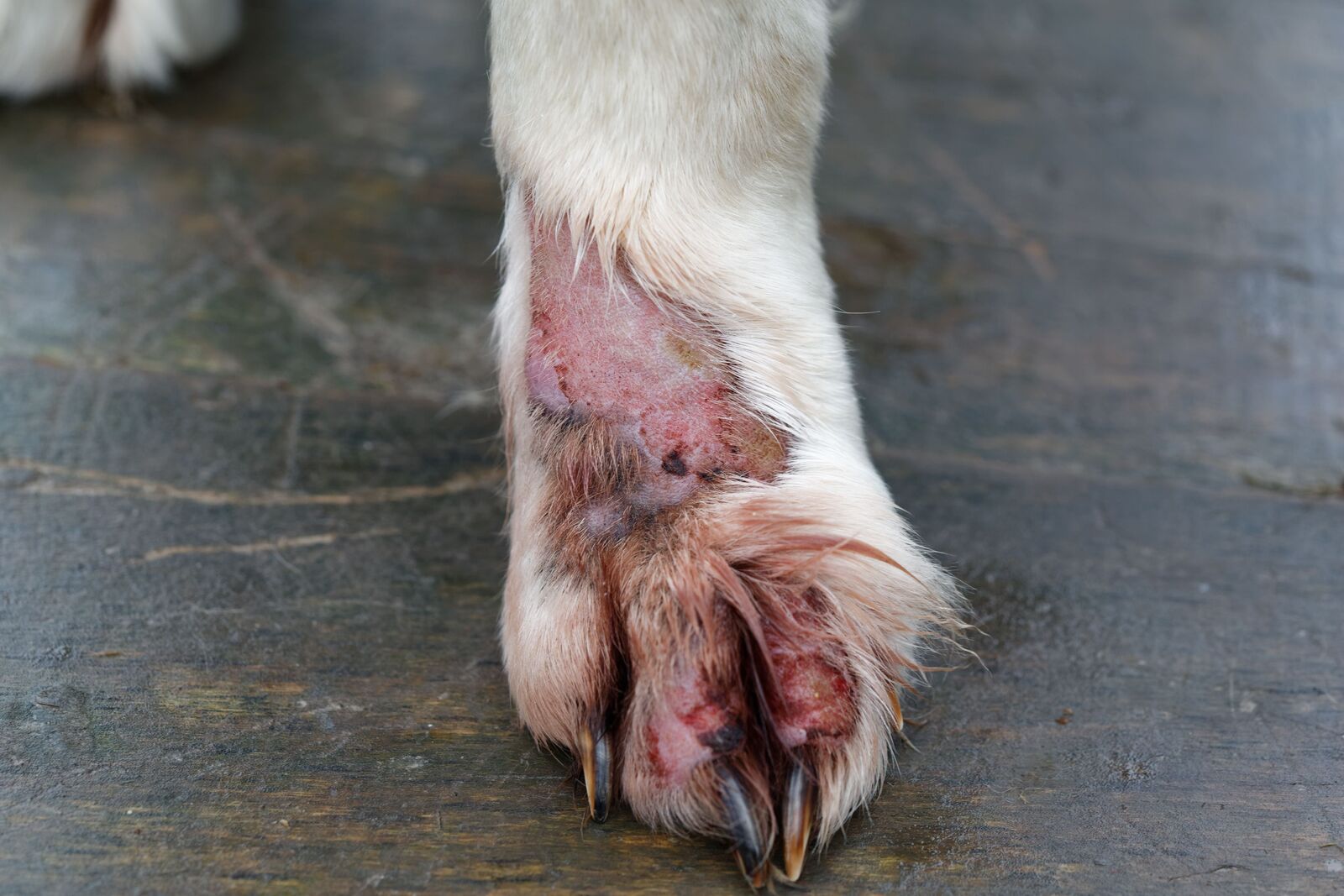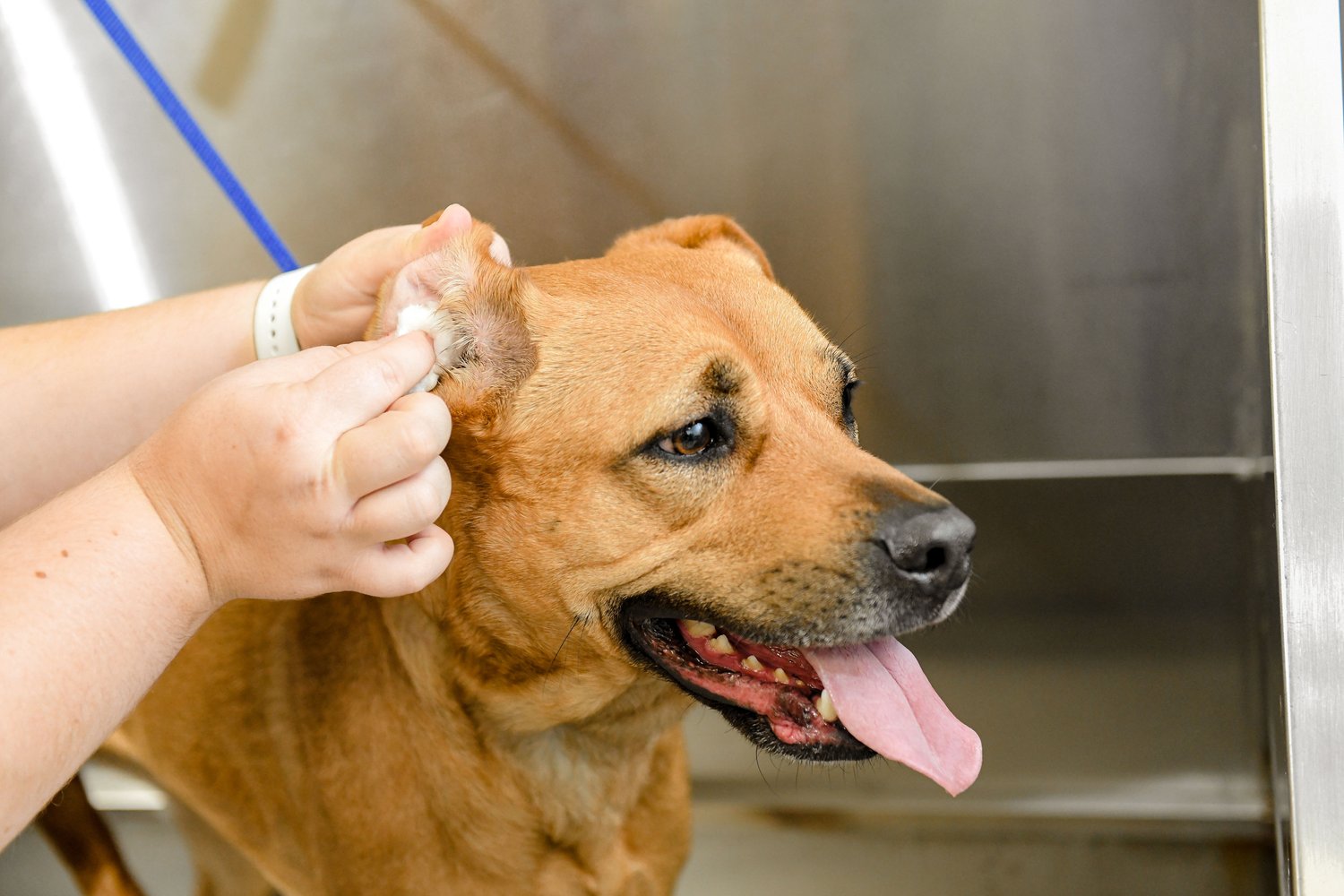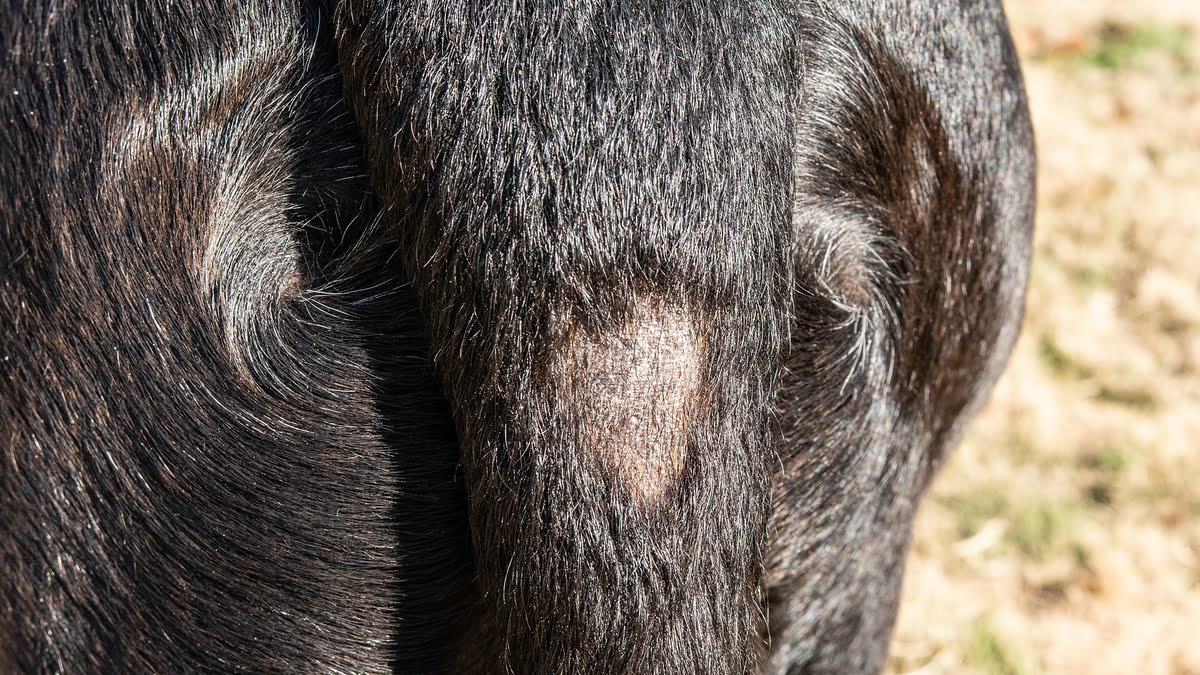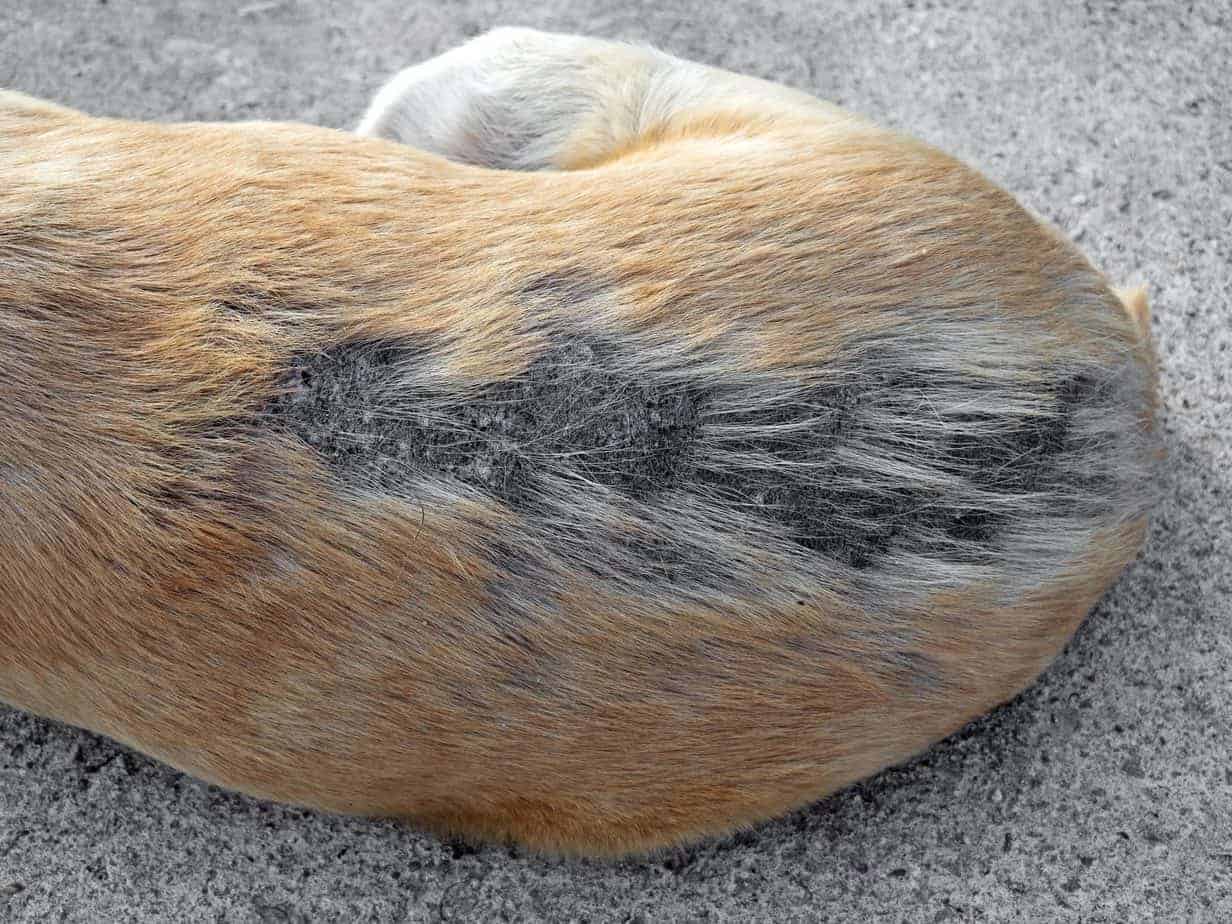Home>Health & Wellness>Common Health Issues>Eye and Ear Health>What Causes A Dog’s Eye To Twitch


Eye and Ear Health
What Causes A Dog’s Eye To Twitch
Published: February 12, 2024
Learn about the causes of a dog's eye twitch and how to maintain their eye and ear health. Find tips to keep your pet's eyes and ears in top condition.
(Many of the links in this article redirect to a specific reviewed product. Your purchase of these products through affiliate links helps to generate commission for Pawsomeoldies.com, at no extra cost. Learn more)
Table of Contents
Introduction
A dog's eye twitching can be a cause for concern for pet owners, as it may indicate an underlying issue that requires attention. While occasional, mild twitching may not be a cause for alarm, persistent or severe twitching could signal a more serious problem. Understanding the potential causes of eye twitching in dogs is essential for ensuring the well-being of our furry companions.
Eye twitching, also known as myokymia, refers to the involuntary, repetitive movement of the eyelid. This phenomenon can manifest in various forms, including rapid fluttering or spasmodic contractions. Dogs, like humans, can experience eye twitching for a multitude of reasons, ranging from benign behavioral triggers to more complex medical conditions.
As responsible pet owners, it's crucial to be attuned to our dog's health and behavior. Observing changes in their physical appearance and habits, including eye twitching, can provide valuable insights into their overall well-being. While occasional eye twitching may not necessarily indicate a severe issue, it's important to monitor the frequency and severity of the twitching to determine whether further action is necessary.
In the following sections, we will delve into the common causes of dog's eye twitching, shedding light on both medical conditions and behavioral factors that may contribute to this phenomenon. Additionally, we will explore the available treatment options and provide guidance on when it's advisable to seek professional veterinary care. By gaining a comprehensive understanding of the potential causes and implications of eye twitching in dogs, pet owners can take proactive steps to ensure the health and happiness of their beloved canine companions.
Read more: What Causes A Dog’s Eye To Bulge
Common Causes of Dog's Eye Twitching
Eye twitching in dogs can stem from a variety of common causes, ranging from benign factors to potential health concerns. Understanding these common triggers is essential for pet owners to effectively assess their dog's well-being and address any underlying issues. Here are some prevalent factors that can lead to eye twitching in dogs:
-
Fatigue and Stress: Similar to humans, dogs can experience eye twitching as a result of fatigue or stress. Prolonged periods of physical or mental exhaustion, as well as stressful environments, can contribute to involuntary muscle contractions, including those in the eyelids.
-
Allergies: Allergic reactions can manifest in various ways in dogs, including eye twitching. Irritants such as pollen, dust, or certain foods can trigger allergic responses, leading to eye discomfort and twitching.
-
Eye Irritation: Foreign objects, such as dust particles or small debris, can cause irritation in a dog's eye, prompting involuntary twitching as a natural response to alleviate the discomfort.
-
Dry Eye: Canine dry eye, also known as keratoconjunctivitis sicca, can result in eye twitching due to the lack of proper lubrication and moisture on the eye's surface.
-
Physical Strain: Excessive physical exertion or strain, particularly during vigorous play or exercise, can lead to temporary eye twitching in dogs. This is often a transient issue that resolves once the dog has had adequate rest.
-
Environmental Factors: Changes in environmental conditions, such as exposure to bright lights or sudden temperature shifts, can trigger eye twitching in dogs.
-
Nutritional Deficiencies: Inadequate intake of essential nutrients, particularly magnesium and potassium, can contribute to muscle spasms, including those affecting the eyelids.
Understanding these common causes of eye twitching in dogs empowers pet owners to assess their dog's circumstances and take appropriate measures to address any underlying issues. While occasional and mild twitching may not necessitate immediate concern, persistent or severe twitching warrants further observation and, if necessary, consultation with a veterinarian to ensure the optimal health and well-being of our furry companions.
Medical Conditions That Can Cause Eye Twitching
Eye twitching in dogs can also be attributed to various medical conditions, some of which may necessitate prompt attention and intervention. Understanding these potential health-related triggers is crucial for pet owners to recognize when their dog's eye twitching may be indicative of an underlying medical issue. Here are some medical conditions that can cause eye twitching in dogs:
-
Corneal Ulcers: Corneal ulcers, characterized by the erosion of the corneal surface, can lead to eye twitching in dogs. These ulcers can result from trauma, foreign objects in the eye, or underlying health conditions, and they often manifest with symptoms such as excessive blinking, squinting, and watery eyes.
-
Infections: Bacterial, viral, or fungal infections affecting the eye or surrounding tissues can provoke eye twitching in dogs. Conditions such as conjunctivitis, uveitis, or keratitis can elicit involuntary muscle contractions in the eyelids as the body's immune response attempts to combat the infection.
-
Glaucoma: Glaucoma, a condition characterized by increased pressure within the eye, can lead to eye twitching and other symptoms such as redness, cloudiness, and vision impairment. This elevated intraocular pressure can cause discomfort and lead to involuntary movements of the eyelids.
-
Neurological Disorders: Certain neurological conditions, such as facial nerve paralysis or neurological trauma, can result in eye twitching as a manifestation of underlying nerve dysfunction. These disorders may require thorough neurological evaluation and specialized treatment to address the root cause of the twitching.
-
Systemic Diseases: Underlying systemic diseases, including autoimmune conditions, endocrine disorders, and metabolic imbalances, can manifest with ocular symptoms, including eye twitching. These systemic issues can impact the overall health of the dog, necessitating comprehensive diagnostic assessment and targeted treatment.
-
Tumors: Ocular tumors, whether benign or malignant, can provoke eye twitching in dogs. Tumors affecting the eyelids, orbit, or intraocular structures can elicit involuntary movements and discomfort, highlighting the importance of thorough ocular examinations in dogs exhibiting persistent eye twitching.
Understanding the potential medical conditions that can lead to eye twitching in dogs underscores the significance of vigilant monitoring and proactive veterinary care. While occasional and transient twitching may not necessarily indicate a severe issue, persistent or worsening symptoms should prompt pet owners to seek professional evaluation to ensure the timely diagnosis and management of any underlying health concerns.
Behavioral Causes of Eye Twitching
Behavioral causes can also contribute to eye twitching in dogs, reflecting emotional or psychological factors that impact their well-being. Understanding these behavioral triggers is essential for pet owners to address any underlying stressors or behavioral issues that may manifest as eye twitching in their canine companions.
-
Anxiety and Stress: Dogs, like humans, can experience anxiety and stress, which may manifest as eye twitching. Situations such as separation anxiety, exposure to loud noises, or unfamiliar environments can trigger stress responses, leading to involuntary muscle contractions, including those affecting the eyelids.
-
Excitement and Overstimulation: Excessive excitement or overstimulation can prompt eye twitching in dogs. Whether it's the anticipation of a walk, playtime, or encountering new stimuli, the heightened emotional arousal can result in temporary eye twitching as a physiological response to the excitement.
-
Boredom and Lack of Stimulation: Dogs thrive on mental and physical stimulation, and a lack thereof can lead to boredom and restlessness. In some cases, this boredom may manifest as eye twitching, signaling the need for increased engagement and enrichment in the dog's daily routine.
-
Habitual Behaviors: Certain habitual behaviors, such as excessive blinking or eye rubbing, can contribute to eye twitching in dogs. These repetitive actions may stem from learned behaviors or underlying discomfort, prompting the dog to exhibit involuntary twitching as a response to the habitual actions.
-
Social Dynamics and Interactions: Dogs are social animals, and their interactions with other animals, including other dogs or household pets, can influence their emotional state. Social dynamics, such as conflicts or hierarchical adjustments, can lead to stress and anxiety, potentially resulting in eye twitching as a behavioral manifestation.
Understanding these behavioral causes of eye twitching in dogs provides valuable insights into the emotional and psychological well-being of our furry companions. By recognizing and addressing potential stressors or behavioral triggers, pet owners can create a supportive and enriching environment for their dogs, promoting overall emotional balance and well-being.
It's important to note that while behavioral factors can contribute to eye twitching, it's essential to consider potential medical or environmental influences as well. Observing the frequency, duration, and context of the eye twitching can aid in distinguishing between behavioral and other potential causes, guiding pet owners in making informed decisions regarding their dog's health and welfare.
Treatment Options for Dog's Eye Twitching
Addressing a dog's eye twitching involves a multifaceted approach that considers the underlying cause and aims to alleviate discomfort while promoting ocular health and overall well-being. The appropriate treatment options for dog's eye twitching depend on the specific cause and severity of the condition. Here are several potential strategies for managing and addressing eye twitching in dogs:
-
Veterinary Evaluation: When a dog exhibits persistent or concerning eye twitching, seeking professional veterinary evaluation is paramount. A thorough ocular examination, including assessment of the eyelids, cornea, and intraocular structures, can help identify any underlying medical conditions or injuries that may be contributing to the twitching. Additionally, a comprehensive physical examination and history-taking can provide valuable insights into the dog's overall health and potential systemic factors that may be linked to the eye twitching.
-
Medical Treatment: Depending on the underlying cause of the eye twitching, medical interventions may be necessary. For instance, if the twitching is attributed to an ocular infection, appropriate antimicrobial or antifungal medications may be prescribed to address the underlying issue. In cases of dry eye, artificial tears or lubricating ointments can help alleviate discomfort and promote ocular lubrication. Additionally, if corneal ulcers or other ocular injuries are identified, targeted treatments such as topical medications or protective measures may be recommended to facilitate healing and alleviate twitching.
-
Environmental Modifications: Addressing environmental factors that may contribute to eye twitching is essential. This may involve minimizing exposure to potential irritants, ensuring adequate lighting conditions, and creating a comfortable and stress-free living environment for the dog. For instance, reducing exposure to allergens, maintaining optimal humidity levels, and minimizing potential stressors can help alleviate eye twitching associated with environmental triggers.
-
Nutritional Support: In cases where nutritional deficiencies are suspected to contribute to eye twitching, dietary adjustments or nutritional supplements may be recommended. Ensuring that the dog's diet provides adequate levels of essential nutrients, including magnesium and potassium, can help address muscle spasms and promote overall muscular and ocular health.
-
Behavioral Management: If behavioral factors are identified as contributing to the eye twitching, addressing underlying stressors and promoting emotional well-being is crucial. This may involve implementing strategies to reduce anxiety, providing mental and physical stimulation, and creating a supportive and enriching environment for the dog. Behavioral modifications and positive reinforcement techniques can help alleviate stress-related eye twitching and promote emotional balance.
-
Ongoing Monitoring and Follow-Up: Following the initiation of treatment, ongoing monitoring of the dog's eye twitching and overall ocular health is essential. This may involve regular veterinary check-ups, adherence to prescribed medications or interventions, and vigilant observation of any changes in the frequency or severity of the twitching. Open communication with the veterinarian and proactive follow-up can ensure that the chosen treatment approach is effective and tailored to the dog's specific needs.
By implementing a comprehensive approach that addresses potential medical, environmental, nutritional, and behavioral factors, pet owners can effectively manage and alleviate eye twitching in their dogs. Collaborating with a trusted veterinarian and prioritizing the dog's ocular health and overall well-being can lead to successful outcomes and improved quality of life for our beloved canine companions.
Read more: What Causes Droopy Eye In Dogs
When to See a Veterinarian
Recognizing the appropriate timing to seek veterinary care for a dog's eye twitching is crucial for ensuring timely intervention and addressing potential underlying issues. While occasional and mild twitching may not necessarily warrant immediate veterinary attention, certain signs and circumstances should prompt pet owners to seek professional evaluation. Here are key indicators that signify the need to consult a veterinarian regarding a dog's eye twitching:
Persistent or Worsening Twitching
If a dog's eye twitching persists or worsens over time, it is advisable to seek veterinary assessment. Persistent twitching that does not resolve within a reasonable timeframe, or shows an escalating frequency and severity, may indicate an underlying medical or ocular issue that requires professional evaluation and intervention.
Associated Symptoms
The presence of additional ocular or systemic symptoms alongside eye twitching warrants veterinary attention. Symptoms such as redness, swelling, discharge, squinting, excessive tearing, or changes in the appearance of the eye should not be overlooked. Additionally, if the dog displays signs of discomfort, such as pawing at the eye or avoiding bright light, prompt veterinary assessment is essential to identify and address potential underlying conditions.
Recent Trauma or Injury
In cases where the dog has experienced recent trauma or injury to the eye or surrounding structures, veterinary evaluation is imperative. Traumatic incidents, such as foreign object penetration, blunt force trauma, or chemical exposure, can lead to ocular injuries and subsequent eye twitching. Seeking prompt veterinary care can help mitigate potential complications and facilitate appropriate treatment.
Behavioral Changes
Significant behavioral changes concurrent with eye twitching should prompt veterinary consultation. If the dog exhibits altered activity levels, appetite changes, or unusual responses to stimuli alongside the eye twitching, it may indicate an underlying health issue that necessitates professional assessment. Behavioral alterations can provide valuable insights into the dog's overall well-being and potential systemic implications of the eye twitching.
Recurrence or Chronicity
For dogs experiencing recurrent or chronic episodes of eye twitching, veterinary evaluation is essential. Recurring twitching episodes, particularly those that occur intermittently over an extended period, may signify an underlying medical condition that requires thorough diagnostic assessment and targeted management. Seeking veterinary guidance can help identify and address the root cause of the recurrent twitching.
Overall Concern for Well-being
Ultimately, if pet owners harbor genuine concerns about their dog's well-being, including the presence of eye twitching, seeking veterinary care is warranted. Trusting one's instincts and prioritizing the dog's health and comfort is paramount. Open communication with a trusted veterinarian can provide reassurance and guidance, ensuring that the dog receives the necessary care and attention tailored to its specific needs.
By remaining attentive to these indicators and promptly seeking veterinary care when necessary, pet owners can advocate for their dog's ocular health and overall well-being. Collaborating with a knowledgeable veterinarian can lead to timely diagnosis, effective intervention, and the promotion of optimal ocular health for our beloved canine companions.













